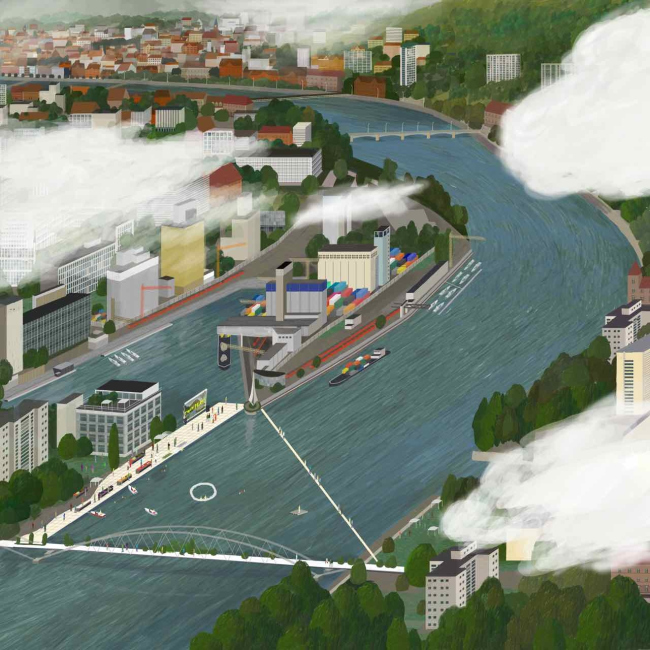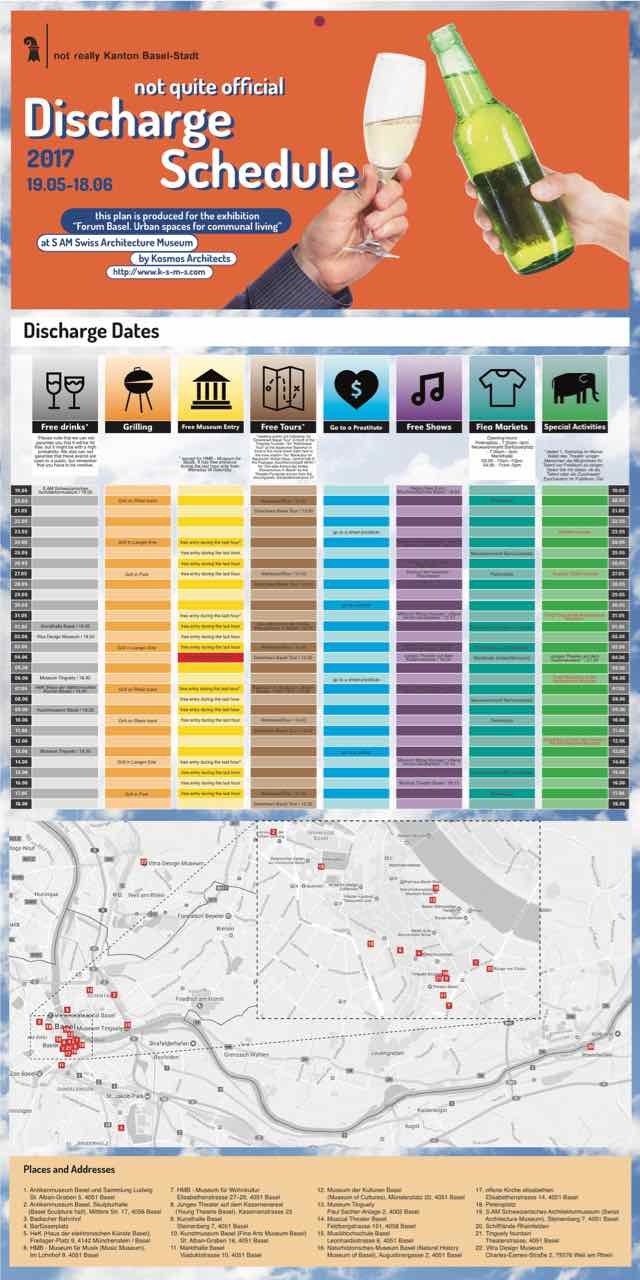|
Published on Archi.ru (https://archi.ru) |
|
| 24.07.2017 | |
|
Open Space Manifesto |
|
|
Natalya Muradova |
|
|
The Swiss Architecture Museum has recently closed the exhibition named “Forum Basel” devoted to open city spaces. Its co-curators were the Russian/Swiss company COSMOS and the Chilean architectural company Plan Comun. Art Drop project © COSMOSFor almost two months, in May and June 2017, the entrance to the in Basel was free. Its halls, otherwise quiet and pristine, turned into an almost-outdoor space open to everyone: the exhibition opened its doors. “This was an exhibition devoted to the public territories and the city of Basel as a testing ground where we can test new technologies and ideas. Its final part coincided with the fair “Art-Basel”. To a certain extent, the subject of the exhibition and the idea to make the museum entrance free came around as a response to hyper-commercialization of the city during Art-Basel” – shares Leonid Slonimsky, a partner of the firm COSMOS. Forum Basel exhibition © COSMOS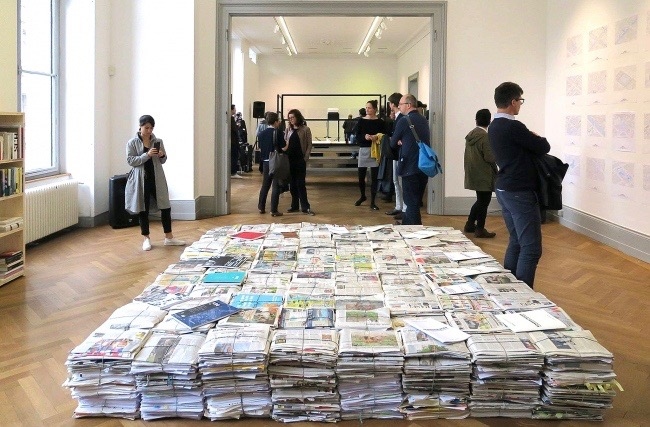 Forum Basel exhibition © COSMOSSo, while Art-Basel is about the modern art as we knew it in the XX century, Forum Basel is more like a postcard from the future in which there are no national borders, the artists exhibit their paintings on Instagram, and paper money is replaced by Bitcoin. So, the new director of SAM Andreas Ruby invited to revise the traditional public spaces of the city not some high-profile Swiss architectural firm but two young companies – the Chilean and the Russian . These two companies might be considered as foreign but the Berliner Andreas Ruby defined the co-curators as “temporary locals”. In addition, Leonid Slonimsky and Artem Kitaev have lived and worked in Basel for more than four years – enough to understand the city context and take in the details. Incidentally, the Russian/American/Swiss company COSMOS was found by the director of the museum on social media websites. Forum Basel exhibition © COSMOSThe architects of COSMOS, together with co-curators and the museum management proposed, as Leonid Slonimsky put it, “to give the museum to people”. All the four halls of SAM were turned into public spaces: in one of them, the visitors played table tennis, another was a co-working space, still another was a newsroom, where one could rest on a podium made of old newspapers and magazines (these were collected on Facebook), and the third hall featured video interviews with urbanist architects on how today’s cities can be improved. In order to breathe still more street life into the museum halls, the organizers invited street gypsy musicians to play at the inauguration ceremony.  Forum Basel exhibition © COSMOS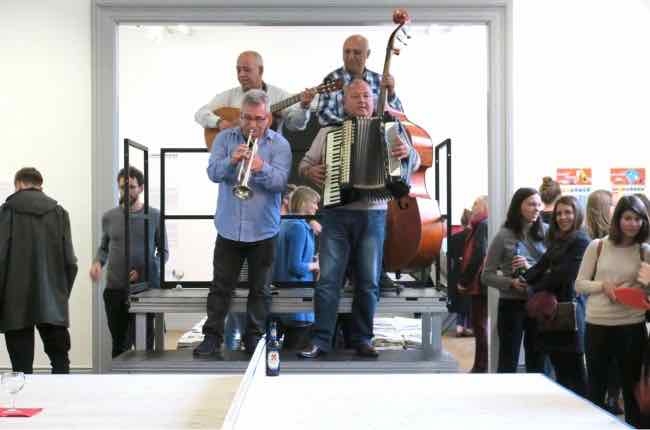 Forum Basel exhibition © COSMOSForum Basel exhibition © COSMOS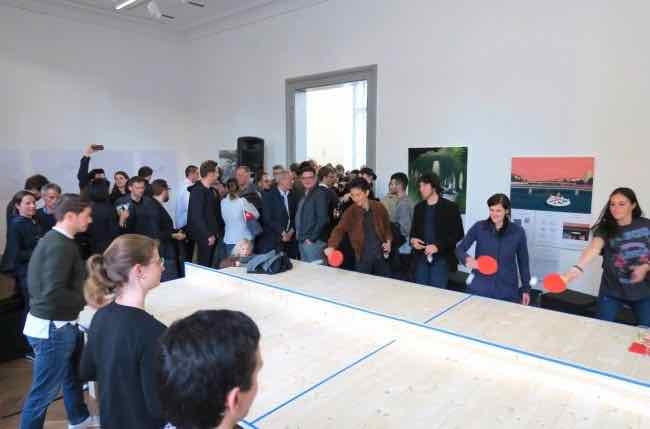 Forum Basel exhibition © COSMOSThe visitors were numerous, and a casual observer could mistake what was going on in SAM for a staged performance. However, the “street culture” part was only a form of the discussion about rethinking the city spaces that otherwise would have become just boring enough to cause the experts’ interest and scare away those that these spaces are actually meant for. 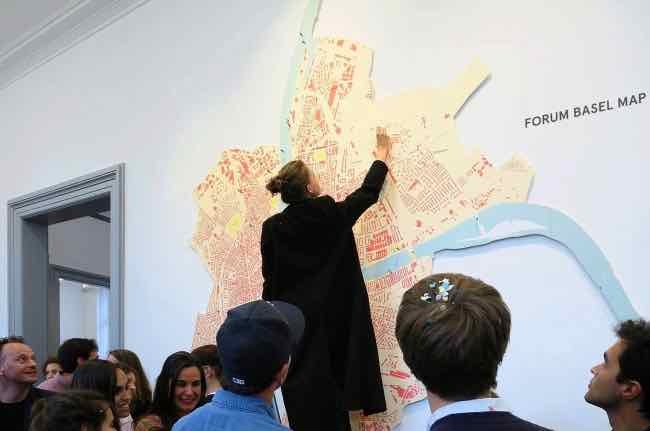 Forum Basel exhibition © COSMOSCOSMOS did a survey of Basel’s urban life, its public rituals, and a few buildings, on the basis of which they created their concepts of public territories that were exhibited alongside the projects of the invited Swiss architectural firms Vécsey&Schmidt, Caesar Zumthor, Manuel Herz, Focketyn del Rio Studio, Rahbaran Hürzeler, and Scheibler & Villard. A fragment of the survey of the Rhein bathing rooms © COSMOSA fragment of the survey of the Basel waterfronts © COSMOSThe survey of the city territory occupied by the Novartis campus © COSMOSThe survey of the potential of a waterfront neighborhood © COSMOSRevitalization project © COSMOSConcept of new ways of using the BIZ tower © COSMOSA fragment of the survey of the Basel city rituals © COSMOSA fragment of the survey of the Basel city rituals © COSMOSThe drafts and axonometric drawings that hung on the walls around the tennis table, at which the game never stopped for a second, placed the accents in the name of the exhibition: in “Forum Basel”, the word “forum” stands not for an event but for a space, very much like the Forum Romanum, open and alive. “According to our design, the museum’s roof was to get a terrace with tables and chairs, for the people to go outside to get a breath of fresh air, talk to one another, and chill out in the shade cast by the trees. We even built a stairway for the people to climb and go out on the roof – Leonid Slonimsky shares – But this seemingly humble idea of bringing the tables and chairs out on the roof and make it accessible to people ran into a lot of bureaucratic obstacles, and ultimately, because of some obscure rules and regulations was prohibited altogether”. As for the tables and chairs, the architects left them on the roof, and turned the terrace, unimplemented but still attractive to visitors, into an installation named “Access Forbidden”. 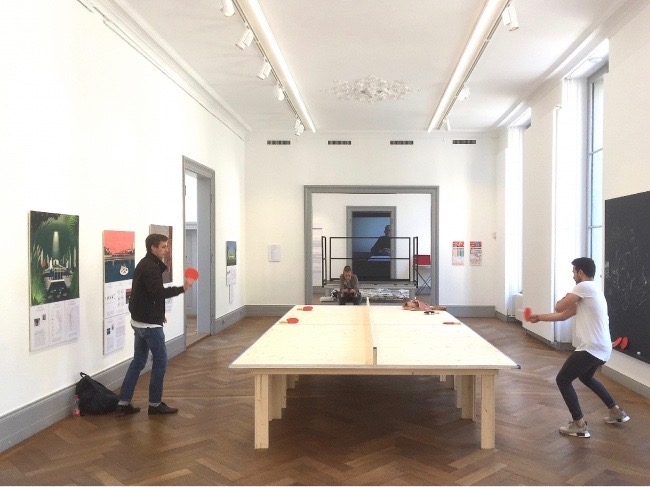 Forum Basel exhibition © COSMOSForum Basel exhibition © COSMOS***
COSMOS: Six Projects for Basel Hidden Garden A project of an underground park Hidden Garden © COSMOSThe architects proposed to turn the old tunnel (the one through which the Birsig River flows) into an underground botanical garden. It could serve as a place for romantic walks, as well as a transient route especially handy during the rain. The microclimate inside of it is supported with special lamps, hydroponics, and heaters. Hidden Garden © COSMOS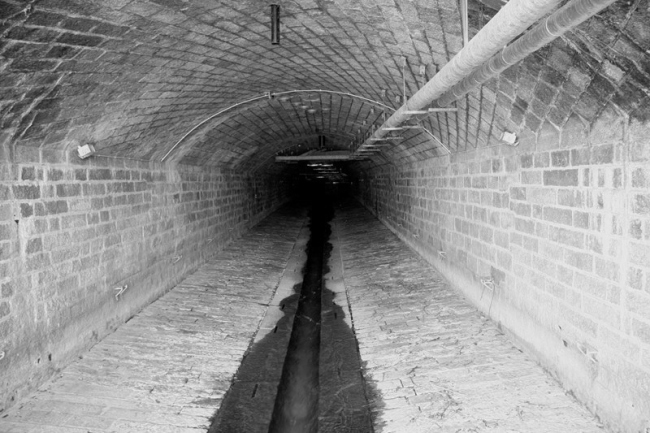 Hidden Garden © COSMOSArt Drop A project of an art gallery on the water Art Drop project © COSMOSThis concept unites the two most important tourist attractions of Basel – the Rhein River and the exhibition Art Basel. The floating platform will become a place for exhibitions, lectures, and celebrations. It will move around the river solely because of the flow, just like the traditional Basel ferries. Art Drop project © COSMOSThermae Urbano © COSMOSThermae Urbano A concept of a city spa Thermae Urbano © COSMOSCOSMOS proposed to heat up the water in the fountain next to the cathedral on the Muensterplatz in the cold seasons in order to turn it into a public spa: a mix of antiquity, Christian tradition, and the famous Basel fountains. Thermae Urbano © COSMOSTriangle Unbound © from the presentation of the firm COSMOSTriangle Unbound A manifesto project for the territory around Dreiländereck Triangle Unbound © from the presentation of the firm COSMOSA concept that “does not require architectural intrusion”. The territory around Dreiländereck (a monument that marks the tripoint where the borders of France, Germany and Switzerland meet) gets an extraterritorial status and is no longer subject to any effective state laws - with all the ensuing consequences. 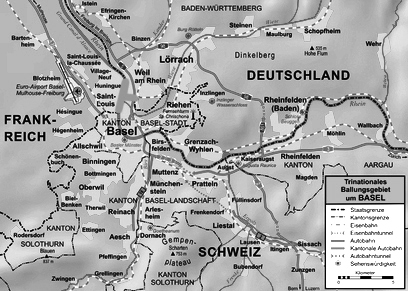 Illustration to the Triangle Unbound project © from the presentation of the firm COSMOSDe-fence © from the presentation of the firm COSMOSDe-fence! A plan for transforming an office territory De-fence © from the presentation of the firm COSMOSThe members-only campus of the global healthcare company Novartis will be partially turned into a public territory open to city people in the non-working hours and on Sundays. During that time, the massive fence running around the territory will turn into an awning. De-fence © from the presentation of the firm COSMOSDischarge Schedule © from the presentation of the firm COSMOSDischarge Schedule How to spend your day in the city Discharge Schedule © from the presentation of the firm COSMOSBy analogy with the official Swiss Abfuhrplan – a brochure that gives a detailed description of collecting and processing the city waste – the architects came up with an alternative version of their own: they gathered all the information and described how one can spend his or her day in the city – with adventures or misadventures, as the case might be. |
|




















